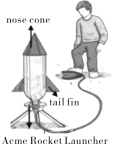题目内容
—Look at my new dress.
—Wow! _________beautiful it is!
A. How B. How a C. What D. What a
 阅读快车系列答案
阅读快车系列答案We’ve probably all met someone who likes to show off about where he or she has been. To some people, traveling is all about how many places one has been to. But luckily, the old “been there, seen that” mode is changing.
Last year’s travel trend (趋势) was “experiential travel”. This is where tourists look for ways to get to know local culture and meet local people so they feel less like an outsider.
So what about this year? Can creative tourists get even more out of their traveling experience?
Transformative travel
Transformative (起改变作用的) travel is much like “experiential travel”, but takes it a step further.
It usually goes through three steps – you go to a place that has a very different background from where you live, you learn wisdom from the new culture and the people you meet, and finally you go back home and use the knowledge in your own lives. This last step is how the “transformation” is completed and what separates transformative travel from experiential travel.
Go green
One way to plan a green trip is to travel a shorter distance, which can reduce your carbon footprint (碳排放量). “One trans-Atlantic flight equals a year’s worth of driving, so taking a trip in this way can help protect the environment,” suggested Warren, according to US News.
Another way to go green in your travel plans is to choose a place that will be helped most from your trip. For example, places like Nepal will enjoy an increase in its local economy (经济) through the trip.
Disappearing sights
Some sights at risk of disappearing are also welcoming an increasing number of tourists.
Everett Potter, a USA Today writer, says that the Arctic and Antarctic have attracted more and more tourists since they are being greatly influenced by climate (气候) change.
Another top sight is the Great Barrier Reef in Australia. It’s believed that the reef will be seriously harmed in just a few years because of pollution and global warming. Travelers look forward to seeing the coral (珊瑚) “before it’s gone or completely changed”, Potter told US News.
The changing travel trends | ||
Before | To some people, traveling means the 1. of places they have been to. | |
Last year | Experiential travel | Tourists look for ways to better understand the local culture so they can be 2. like local people. |
This year | Transformative travel | ● Going to a place with a different background. ● Learning wisdom from the new culture and people. ● 3. home and using the knowledge in your own lives. |
Go green | ● One way is to travel 4. to your home. It can reduce your carbon footprint. ● Another way is to choose a place which will get the most help through the trip. | |
Disappearing sights | ● The Arctic and Antarctic have become more and more 5. because of climate change. ● Travelers expect to see the coral before it is gone or completely changed. |


